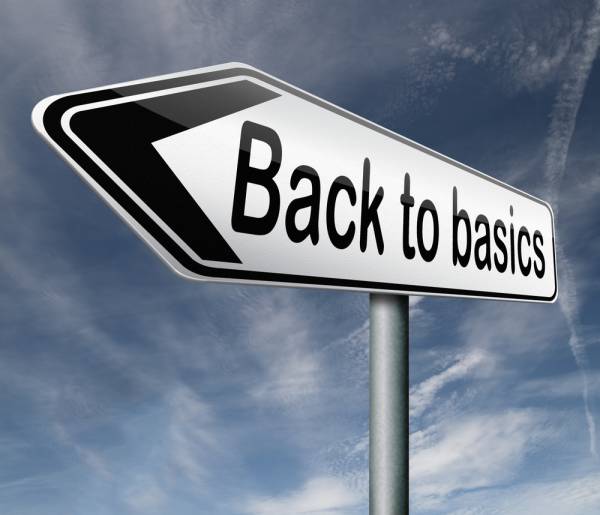As a coach, my job is to help people. Whether it’s in person, over the Internet, or in an article, I will always help people to the best of my ability. This job isn’t all about personal records and proud moments. Sometimes, it’s about stopping people from hitting their own self-destruct button.
Either way, you need to help me help you. Here are three training approaches I have helped many people avoid, while others chose to continue regardless and suffer the ill consequences. Read them through and make sure you steer well clear of these approaches in your own training.
![]() Click To Tweet: Three training approaches to avoid
Click To Tweet: Three training approaches to avoid
The Go Hard or Go Home Approach
I’ll tell you it straight – going full pelt at everything you do is a recipe for disaster. It might be sooner, it might be later, but I guarantee to you that you will crash and burn.
Take a racing driver as an example. Every one of them wants to win the race. But do they charge around the track with their feet on the gas the whole time? Of course not. They accelerate and they brake as necessary. They choose their lines carefully. They caress their cars around the course, taking them up to the limit, but never beyond. Hell, they even have pit stops to replace worn parts and refuel. (Now there’s a novel concept.)
For racing drivers, the feedback system is instantaneous. One small slip and they will spin off the track. But they are experts at knowing how to push themselves and their cars (read, bodies) close to the limit without overstepping the mark. Our feedback system is not so instantaneous. So, we need to be even more aware of the consequences of our current actions.
Watch the best athletes train day in and day out and you will see a pattern. A carefully considered approach to everything they do. Rarely will they hit a day so hard that they wear out their engines, burn up their tires, and use up most of their fuel, as they know doing so will result in them getting overtaken. They keep it steady, lap after lap, waiting for just the right moments to step it up a gear.
![]() Click To Tweet: Go Hard or Go Home Training Approach = Crash and Burn?
Click To Tweet: Go Hard or Go Home Training Approach = Crash and Burn?
The Take-Away: Don’t go for glory daily. Choose a training approach that has built in regulation principles, and keep yourself in the racE.

The I’m Too Good to Go Back to Basics Approach
I often see this approach if I have given a trainee a correction that involves dialing back a step or two. My correction might involve taking some weight off the bar to preserve quality of movement or working some drills before coming back to the full movement. Trainees with this approach have reactions to my advice that vary from a nod and thanks followed by completely ignoring what I’ve just said to a full-blown refusal to acknowledge intervention is required.
Being the persistent and annoying coach I am, this doesn’t deter me and I will usually begin a discussion similar to the one we are having now. If you are moving poorly, I will do what is necessary to get you moving better. In some cases it will involve dropping your ego to a place where it feels rather uncomfortable. An attitude of “I’m too good to go back to basics” may result in sh*tty movement for that session – if you’re lucky. Because, if continued over time, then sh*tty movement will have you grounding yourself in poor movement. This will lead to sub-par potential at best, and injury at worst.
The Take-Away: Man up and do what it takes to drive your strength and movement forward, even if it feels like a step back at the time.

The I’ll Go About This My Way Approach
If you have trust in your coach (and you should if you have paid your hard earned cash for the privilege of being coached by a specific individual), then trust him or her. Trust your coach. Trust your program. If you don’t like him, her, or it, then go elsewhere.
Otherwise, do the damn program. In its entirety. The way it’s meant to be done. Without chopping and changing details, unless necessary. And let your coach know when you do need to deviate from the program.
Remember when you first started training? You were told to do something and you did it, knowing that it would make you better. Adopt that mentality. That means being open, receptive, and questioning. Be open to coaching. Be receptive to feedback. Take it all on board at face value and work on it. Ask questions if you’re not sure of something.
There may be parts of the program that you are not sure about and that feel like they are not working for you. By all means question and give your coach feedback on these things, but also give him or her the benefit of the doubt and do it anyway. Even at the highest level, getting stronger is an individual game of trial and error to some degree.
Not all of a program is going to suit you perfectly the first time around. But to find out what works, you need to give it a fair go. Oh, and that thing you dislike doing? The one for which you just make your excuses and hope that your coach won’t notice? I’m willing to bet it’s the thing you need to do the most.
![]() Click To Tweet: Is your coach or trainer worth the money? Then do as you’re told!
Click To Tweet: Is your coach or trainer worth the money? Then do as you’re told!
The Take-Away: If you have placed your faith with a good coach, then stretch that faith to cover the fact that your coach has your best interests at heart, and has invested him- or herself in making you better – be that through programming, coaching, advice, analysis, or a combination.

My Request to You as an Athlete or Coach
Many times, I’ll see these approaches combined into one cataclysmic road to self-destruction. Athletes who thinks they are better than the advice they are given, who want to do it their own way, which is to beat themselves into the ground.
Athletes, I bet you can think of at least one person like this. And coaches, you can probably think of half a dozen. Help these people and share this article somewhere they will see it. If you’re reading this and thinking, “This doesn’t apply to me,” then take a step back and check yourself. Or just do it your way.
![]() Click To Tweet: Article: 3 training approaches that will destroy you.
Click To Tweet: Article: 3 training approaches that will destroy you.
Photos courtesy of Shutterstock.






